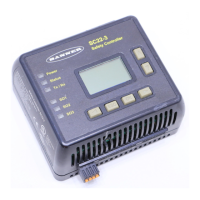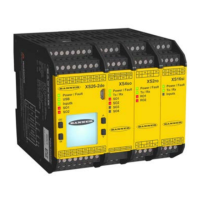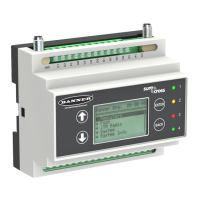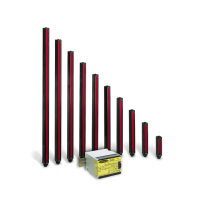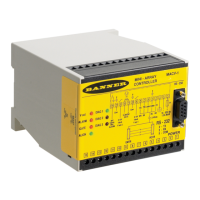Mute Device Requirements
The muting devices must, at a minimum, comply with the following requirements:
1. There must be a minimum of two independent hard-wired muting devices.
2. The muting devices must have one of the following: normally open contacts, PNP outputs (both of which must fulfill
the input requirements listed in the Specifications on page 11 ), or a complementary switching action. At least one
of these contacts must close when the switch is actuated, and must open (or not conduct) when the switch is not
actuated or is in a power-off state.
3. The activation of the inputs to the muting function must come from separate sources. These sources must be
mounted separately to prevent an unsafe muting condition resulting from misadjustment, misalignment, or a single
common mode failure, such as physical damage to the mounting surface. Only one of these sources may pass
through, or be affected by, a PLC or a similar device.
4. The muting devices must be installed so that they cannot be easily defeated or bypassed.
5. The muting devices must be mounted so that their physical position and alignment cannot be easily changed.
6. It must not be possible for environmental conditions, such as extreme airborne contamination, to initiate a mute
condition.
7. The muting devices must not be set to use any delay or other timing functions unless such functions are
accomplished so that no single component failure prevents the removal of the hazard, subsequent machine cycles
are prevented until the failure is corrected, and no hazard is created by extending the muted period.
6.4.11 Bypass Switch
The safety device bypass is a manually activated and temporary suspension of one or more safety input stop signals,
under supervisory control, when no immediate hazard is present. It is typically accomplished by selecting a bypass mode
of operation using a key switch to facilitate machine setup, web alignment/adjustments, robot teach, and process
troubleshooting.
Bypass switches can be mapped to one or more of the following safety input devices:
• Safety gate (interlocking) switches
• Optical sensors
• Two-Hand Controls
• Safety mats
• Protective stop
Requirements of Bypassing Safeguards
Requirements to bypass a safeguarding device include
5
:
• The bypass function must be temporary
• The means of selecting or enabling the bypass must be capable of being supervised
• Automatic machine operation must be prevented by limiting range of motion, speed, or power (used inch, jog, or
slow-speed modes). Bypass mode must not be used for production
• Supplemental safeguarding must be provided. Personnel must not be exposed to hazards
• The means of bypassing must be within full view of the safeguard to be bypassed
• Initiation of motion should only be through a hold-to-run type of control
• All emergency stops must remain active
• The means of bypassing must be employed at the same level of reliability as the safeguard
• Visual indication that the safeguarding device has been bypassed must be provided and be readily observable from
the location of the safeguard
• Personnel must be trained in the use of the safeguard and in the use of the bypass
• Risk assessment and risk reduction (per the relevant standard) must be accomplished
• The reset, actuation, clearing, or enabling of the safeguarding device must not initiate hazardous motion or create
a hazardous situation
Bypassing a safeguarding device should not be confused with muting, which is a temporary, automatic suspension of the
safeguarding function of a safeguarding device during a non-hazardous portion of the machine cycle. Muting allows for
material to be manually or automatically fed into a machine or process without issuing a stop command. Another term
commonly confused with bypassing is blanking, which desensitizes a portion of the sensing field of an optical safeguarding
device, such as disabling one or more beams of a safety light curtain so that a specific beam break is ignored.
5
This summary was compiled from sources including ANSI NFPA79, ANSI/RIA R15.06, ISO 13849-1 (EN954-1), IEC60204-1, and ANSI
B11.19.
XS/SC26-2 Safety Controller
81
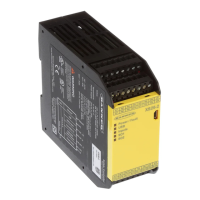
